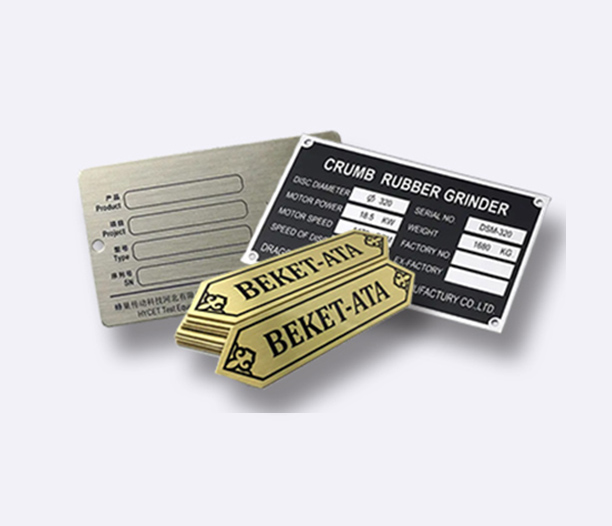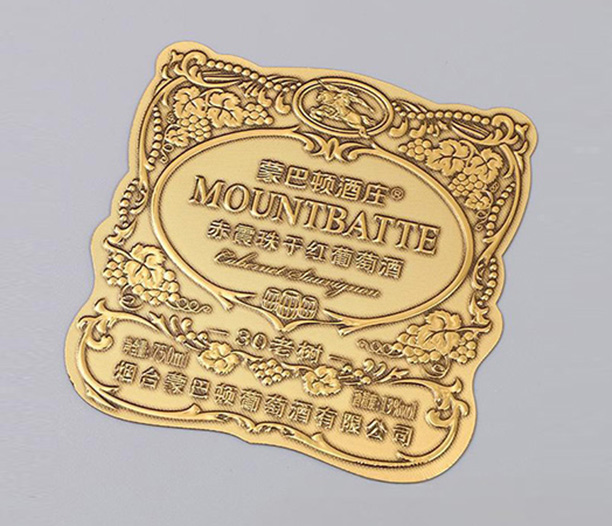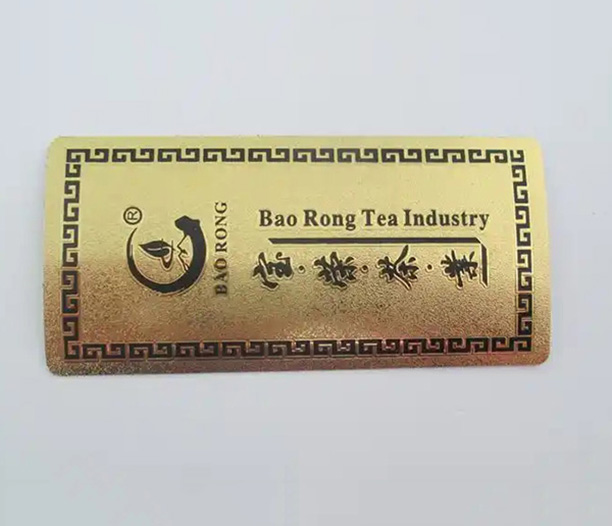In today's world, where branding, identification, and durability matter, engraved metal name plates stand out as a timeless solution. These plates are not just simple tags; they are crafted pieces that combine artistry with functionality. Whether you're a business owner looking to enhance your corporate image, a manufacturer needing reliable equipment labels, or a homeowner seeking personalized touches, engraved metal name plates offer a versatile and long-lasting option. This article delves into the intricacies of engraved metal name plates, covering their fundamental aspects, materials, applications, advantages, and customization possibilities. By the end, you'll have a clear understanding of why these plates are a go-to choice across various sectors, and how they can meet your specific needs.
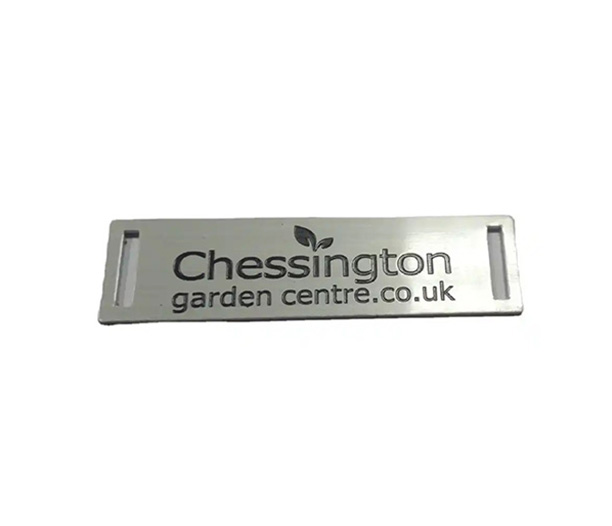
What Are Engraved Metal Name Plates?
Engraved metal name plates are precisely crafted plates made from metals like brass, aluminum, or stainless steel, featuring text, logos, or designs that are etched into the surface through engraving techniques. The process involves removing material from the metal to create permanent, raised, or recessed markings. This method ensures that the information—such as names, serial numbers, or instructions—remains legible and resistant to wear over time. Historically, engraved metal name plates have been used in industrial settings for asset identification, but they have evolved to serve decorative, commemorative, and security purposes. Unlike printed labels, which can fade or peel, the engraved metal name plate offers a robust solution that withstands harsh environments, making it ideal for both indoor and outdoor use. The precision of engraving allows for intricate details, enabling businesses and individuals to convey professionalism and attention to detail. In essence, an engraved metal name plate is more than just an identifier; it's a durable asset that enhances credibility and organization.
Materials Used in Engraved Metal Name Plates
The choice of material plays a crucial role in the performance and appearance of an engraved metal name plate. Common metals include stainless steel, brass, aluminum, and bronze, each offering unique benefits. Stainless steel is highly popular due to its corrosion resistance and strength, making it suitable for outdoor or industrial environments where exposure to moisture, chemicals, or extreme temperatures is common. Brass, on the other hand, provides a classic, elegant look with its gold-like finish, often used for decorative plaques or high-end branding. Aluminum is lightweight yet durable, and it can be anodized to add color and extra protection against weathering. Bronze is valued for its antique appeal and longevity, frequently seen in memorials or historical markers. The engraving process varies slightly depending on the metal; for instance, laser engraving works well with stainless steel for precise marks, while rotary engraving might be preferred for softer metals like aluminum. When selecting a material for an engraved metal name plate, factors such as environmental conditions, budget, and aesthetic preferences come into play. Ultimately, the right material ensures that the engraved metal name plate not only looks appealing but also lasts for years without deterioration.
Engraving Techniques for Metal Name Plates
Several engraving techniques are employed to create detailed and lasting markings on engraved metal name plates. The most common methods include laser engraving, rotary engraving, and chemical etching. Laser engraving uses a high-powered laser beam to vaporize the metal surface, resulting in precise, clean lines that are ideal for complex logos or fine text. This method is efficient and allows for high customization without physical contact, reducing the risk of damage to the plate. Rotary engraving, also known as mechanical engraving, involves a cutting tool that physically removes metal to form grooves. It's a traditional approach that produces deep, tactile engravings, perfect for applications where durability is paramount, such as on machinery or tools. Chemical etching, on the other hand, uses acids to eat away at the metal, creating smooth, burr-free designs. This technique is cost-effective for large batches and works well with intricate patterns. Each method has its advantages; for example, laser engraving is faster for small runs, while rotary engraving offers unmatched depth for long-term wear resistance. When choosing an engraving technique for an engraved metal name plate, consider factors like the desired finish, production volume, and the level of detail required. This ensures that the final product meets both functional and aesthetic standards.
Applications of Engraved Metal Name Plates
Engraved metal name plates find applications across a wide range of industries and settings, thanks to their versatility and resilience. In the corporate world, they are used for office door plaques, desk name tags, and award recognition, enhancing professionalism and brand identity. Industrial sectors rely on engraved metal name plates for equipment labeling, safety instructions, and asset tracking in factories, warehouses, and construction sites, where they must endure rough handling and environmental stressors. In the automotive and aerospace industries, these plates serve as serial number tags or compliance labels, ensuring traceability and regulatory adherence. For residential purposes, engraved metal name plates add a personal touch to mailboxes, house numbers, or custom gifts, combining functionality with style. Additionally, they are common in public spaces for directional signs, memorials, and museum displays, where longevity and clarity are essential. The engraved metal name plate is also favored in military and government applications for its security features, as the permanent engraving deters tampering or forgery. By understanding these diverse uses, one can appreciate how an engraved metal name plate adapts to various needs, providing reliable identification and decoration wherever it's applied.
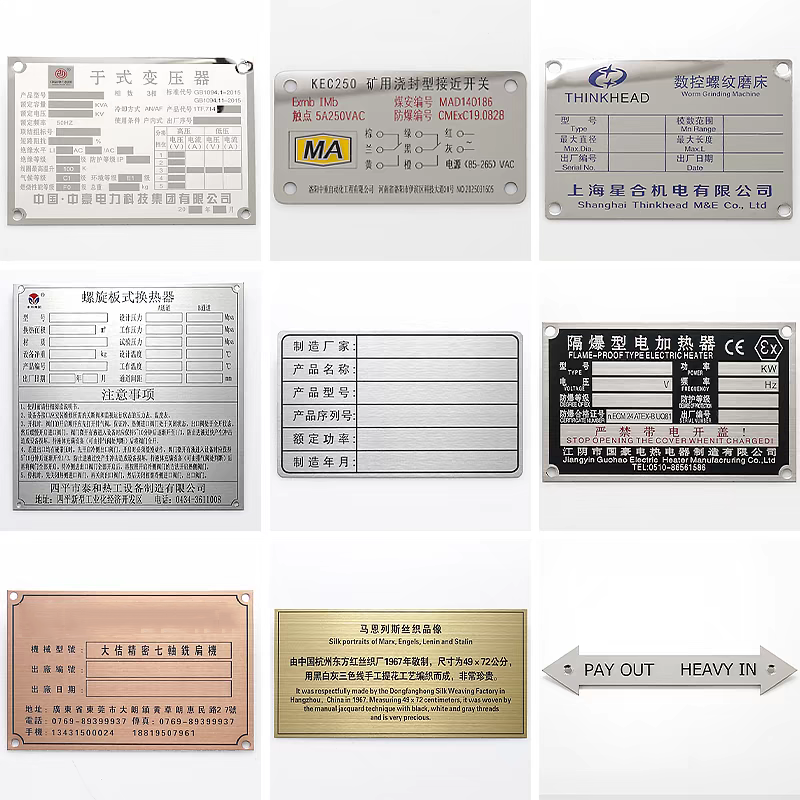
Benefits of Using Engraved Metal Name Plates
The advantages of engraved metal name plates are numerous, making them a preferred choice over alternative labeling methods. Firstly, durability is a standout benefit; these plates are resistant to fading, scratching, and corrosion, ensuring that information remains readable for decades, even in harsh conditions. This longevity translates to cost savings, as replacements are rarely needed. Secondly, the professional appearance of an engraved metal name plate elevates the perceived quality of a product or space, fostering trust and credibility. The engraving process allows for high customization, enabling unique fonts, graphics, and sizes to match specific branding or personal preferences. Moreover, engraved metal name plates are environmentally friendly compared to plastic alternatives, as metals are often recyclable and the engraving process minimizes waste. Safety is another key benefit; in industrial settings, clearly engraved warnings or instructions help prevent accidents by providing permanent, easy-to-read guidance. Lastly, the tactile nature of engraved text can aid visually impaired individuals, enhancing accessibility. Overall, the combination of strength, aesthetics, and versatility makes the engraved metal name plate an invaluable asset in many contexts.
Customization Options for Engraved Metal Name Plates
Customization is a core feature of engraved metal name plates, allowing users to tailor them to exact specifications. Options include choice of metal type, finish (such as polished, brushed, or coated), size, and shape—ranging from standard rectangles to custom die-cut designs. The engraving itself can be adjusted for depth, font style, and color infill; for instance, adding black or colored epoxy to the engraved areas enhances contrast and visibility. Logos, barcodes, or QR codes can be incorporated for modern applications like inventory management or marketing. Additionally, mounting methods vary, with options for adhesive backing, screws, or magnetic bases to suit different surfaces. When ordering a custom engraved metal name plate, it's important to provide clear artwork and specifications to ensure accuracy. Many suppliers offer digital proofs for approval, allowing revisions before production. This level of personalization ensures that each engraved metal name plate not only serves its functional purpose but also aligns with aesthetic goals, whether for a corporate gift, industrial machine, or residential address plaque.
Maintenance and Care for Engraved Metal Name Plates
Proper maintenance can extend the life of an engraved metal name plate, preserving its appearance and legibility. For most metals, regular cleaning with a soft cloth and mild soapy water is sufficient to remove dirt and grime. Avoid abrasive cleaners or tools that could scratch the surface, especially on polished finishes. For outdoor engraved metal name plates, periodic inspections for signs of corrosion or buildup are recommended; applying a protective wax or sealant can provide an extra layer of defense against the elements. If the plate has color infill, gentle cleaning will prevent the filler from wearing away. In industrial environments, where exposure to chemicals or heavy wear is common, choosing a corrosion-resistant metal like stainless steel from the outset minimizes maintenance needs. By following these simple care tips, an engraved metal name plate can remain in excellent condition for years, continuing to serve its purpose effectively without frequent upkeep. In conclusion, engraved metal name plates are a robust, versatile, and aesthetically pleasing solution for identification, branding, and decorative needs. From their durable materials and precise engraving techniques to their wide-ranging applications and customizable features, these plates offer unmatched benefits that stand the test of time. Whether for business or personal use, investing in an engraved metal name plate ensures clarity, professionalism, and longevity. As you consider your options, remember to evaluate factors like material suitability and engraving method to make the most of this timeless product.
Frequently Asked Questions About Engraved Metal Name Plates
Q1: What is the typical lifespan of an engraved metal name plate?
A1: The lifespan of an engraved metal name plate can vary based on the material and environment, but generally, it lasts for decades. For instance, stainless steel or brass plates in outdoor settings can endure 20-50 years without significant wear, thanks to their resistance to corrosion and fading. Regular maintenance can further extend this period.
Q2: Can engraved metal name plates be used outdoors in harsh weather conditions?
A2: Yes, engraved metal name plates are highly suitable for outdoor use, especially when made from weather-resistant metals like stainless steel or aluminum. These materials are designed to withstand rain, UV exposure, and temperature fluctuations, and the engraving itself remains intact, ensuring long-term readability.
Q3: How do I clean and maintain an engraved metal name plate to keep it looking new?
A3: To clean an engraved metal name plate, use a soft cloth with mild soap and water, gently wiping the surface. Avoid harsh chemicals or abrasive pads that could damage the engraving. For added protection, you can apply a metal-friendly polish or sealant periodically, particularly for plates exposed to harsh conditions.
Q4: Are there eco-friendly options available for engraved metal name plates?
A4: Absolutely, many engraved metal name plates are eco-friendly, as metals like aluminum and stainless steel are recyclable. Additionally, the engraving process often generates minimal waste compared to other labeling methods. You can inquire with suppliers about using recycled materials or sustainable practices.
Q5: What is the average cost range for a custom engraved metal name plate?
A5: The cost of a custom engraved metal name plate depends on factors like size, material, complexity, and quantity. Generally, prices range from $10 to $100 per plate for small orders, with discounts available for bulk purchases. It's best to request quotes from multiple suppliers to find an option that fits your budget.



